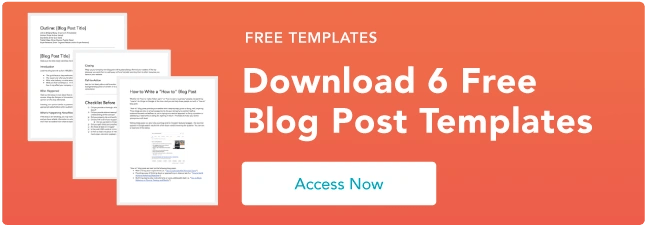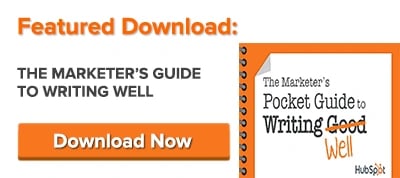Mad Men fans everywhere remember the pivotal first scene where we learn just how talented Don Draper is at his job.
Faced with an almost-impossible copywriting task, he rose to the occasion to solve a huge problem for his client, Lucky Strike. In spite of research warning customers of the dangers of cigarettes, Draper delivered the iconic slogan — “It’s toasted” — to differentiate the brand from its competitors.
Now, we definitely aren’t advocating for smoking cigarettes (or many of Draper’s health choices). But fictional or not, you can’t deny the memorability and catchiness of that tagline.
It’s easy to recognize good copywriting when you see it, but there are actually several characteristics that really separate outstanding writing from the rest of the pack. Want to know them? Read on below to find out.
What is copywriting?
Copywriting is one of the most critical elements of any and all forms of marketing and advertising. Copywriting consists of the words, either written or spoken, marketers use to try to get people to take an action after reading or hearing them.
Copywriting is like a call-to-action, but on a bigger scale: Copywriters are trying to get people to feel, think, or respond — or, ideally, to Google the slogan or brand to learn more about the campaign. And where a blog post like this one has the luxury of hundreds of words with which to make a case, copywriters only have a few words to make their case.
But short and sweet isn’t the only characteristic of good copywriting. Keep reading to learn more characteristics of truly memorable copy.
6 Traits of Good Copywriting
1) It tilts your perspective.
Sometimes, all a message needs to break through is a slight shift in angle. We’ve grown so accustomed to blocking out marketing messages, we don’t even see them anymore. One of the most powerful things a copywriter can do is break down a reader’s guard with an unexpected approach. Every story has a myriad of angles — your job as a copywriter is to find the one that resonates.

This ad from Sage Therapeutics pressing the importance of talking about postpartum depression works because instead of asking readers to care about something they don’t know, it puts them in the position of experiencing the struggle that mothers suffering do. Did they miss some readers who quickly passed by the ad thinking it was for adult pacifiers? Most definitely. But the ad resonated that much more thoroughly with those who read it.
The next time you sit down to write, try out this approach. Don’t take the topic head on. Instead, ask yourself why it matters. Each time you write down an answer, challenge yourself to push it further. Find the larger story happening behind your message.
2) It finds connections.
In 1996, Steve Jobs let the cat out of the bag. He was speaking with a journalist from Wired on the topic of creativity and explained:
“Creativity is just connecting things. When you ask creative people how they did something they feel a little guilty because they didn’t really do it, they just saw something. It seemed obvious to them after awhile.”
Let’s say you have to write an ad for a new pair of sneakers. You could take the assignment head on. You could write about the elasticity of the shoe’s sole or the lightweight design. Indeed, many have. Or you could put all of that aside and instead draw the connection between the product and the experience it evokes.
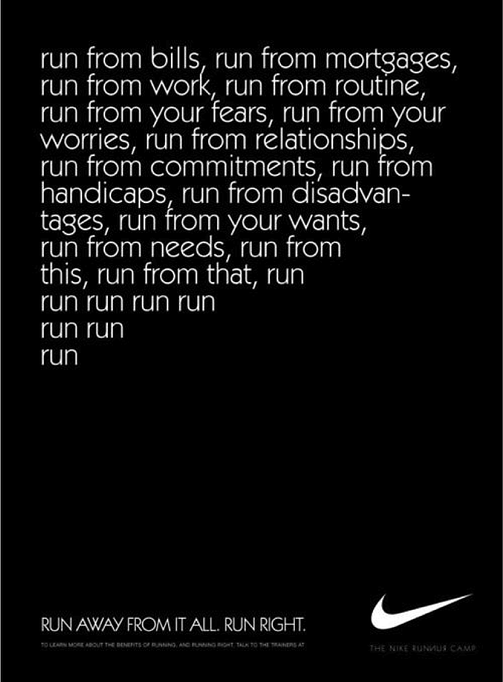
Source: Pinterest
Two things are happening in this ad. First, the copy recognizes that for many, running isn’t about running at all — it’s about solitude, peace, and restoring sanity to an otherwise hectic life. Second, not only does Nike connect the ad to the experience of running, it actually connects to the sound that those shoes make as they hit the pavement.
This ad is about the complexity of one’s life fading away and being replaced by simplicity and clarity. As the copy progresses, the sentences simplify and the copy’s complexity is slowly replaced by the simple and rhythmic pounding of words: run, run, run, run. The same rhythm one hears when all but their footsteps have faded away. That’s connection.
3) It has a stunning lead.
The following are all headlines or leading sentences from Urban Daddy, an email-based magazine drawing attention to new products, experiences, and eateries.
- “Six days. That’s how long you have until 65% of your body is turkey.”
- “There are 8,760 hours in a year. And just one hour in which a stand will be dispensing gratis latkes with homemade applesauce and sour cream in Harvard Square. Yeah, it’s not fair. But 60 minutes is 60 minutes.”
- “Ewoks. Talk about living.”
What’s common among each of these leads? They make us want to read the next line. I mean, seriously, how much do you want to know where that Ewok thing is headed?
There’s an adage in copywriting that’s loosely credited to copywriter and business owner Joe Sugarman, which roughly states that the purpose of the headline is to get you to read the first line. The purpose of the first line is to get you to read the second line, and so on. In short, if your first line doesn’t enthrall your readers, all is lost.
4) It is born out of listening.
Seeing its plans to launch yet another gym in the greater Boston region, an outsider might have called the Harrington family a wee bit crazy. The market was already flush with gyms, including a new breed of luxury ones that seemed to be in an arms war for the flashiest perks. Gyms across the region were offering massage services, smoothie bars, and fleets of personal trainers. And GymIt wouldn’t have any of that.
What did GymIt have? An understanding of its core audience. Before launching its new gym, the brand did a ton of listening to its primary market of gym-goers. For many in GymIt’s target market, the added benefits associated with luxury gyms were nice to have, but came with a lot of baggage — namely expensive rates and overly complex contracts.
GymIt decided to simplify the gym-going experience for people who predominately cared about getting in and working out. The copy in its launch campaign and across its marketing materials reflects that understanding.

In an older blog post, Copyblogger‘s Robert Bruce put this nicely. “Humble yourself and truly serve your audience, listen to their needs and desires, listen to the language they use,” he said. “If you listen carefully, your audience can eventually give you everything you need, including much of your copy. Get out of their way.”
5) It avoids jargon and hyperbole.
Groundbreaking. Revolutionary. Business Solutions. Targetable Scale. Ideation. Evidence-based approaches. Industry-wide best practices.
Have I lost you yet?
When writers struggle to convey what is truly special about their company, product, or service, they sometimes fall back on jargon or hyperbole to underscore their point. The truth is, good copywriting doesn’t need dressing up. Good copywriting should speak to the reader in human terms.
This isn’t to say you should never celebrate awards or achievements. Just be direct in the way you explain that achievement. This homepage from Basecamp does a nice job of highlighting its popularity in concrete terms.

6) It knows its audience.
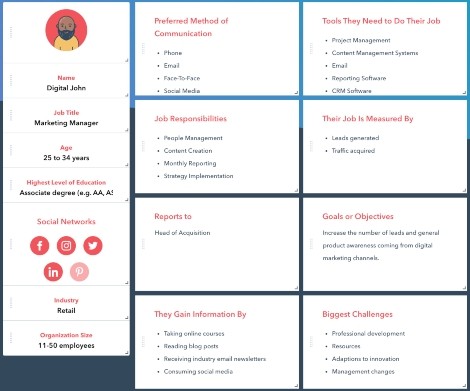
Create personas with HubSpot’s template
Good copywriting knows the audience it is writing to because it recognizes that effective communication requires a deep understanding of the reader. By knowing the audience, a copywriter can tailor their messaging, tone, and language to resonate with the intended readers.
Whether it’s a sales copy or a blog post, addressing the audience’s needs, pain points, and desires makes the copy more relevant, relatable, and engaging. It enables the writer to convey the value of a product or service in a way that truly speaks to the audience, fostering a connection and increasing the chances of achieving the desired outcome.
7) It uses compelling headlines.
Your content can be excellent, but if you don’t get people to read it in the first place, it’s a waste. Good copywriting incorporates attention-grabbing headlines because they serve as the first impression and the gateway to the rest of the content.
A well-crafted headline like the one shown above from NPR grabs attention, sparks curiosity, and entices readers to continue reading. It sets the tone for the entire piece and plays a crucial role in capturing the audience’s interest in a crowded online landscape. A compelling headline communicates the value and benefits of the content, making readers eager to dive deeper.
Without an attention-grabbing headline, even the best-written copy may go unnoticed. By crafting strong headlines, copywriters can increase click-through rates, engage readers, and maximize the impact of their content.
8) It is well-researched.
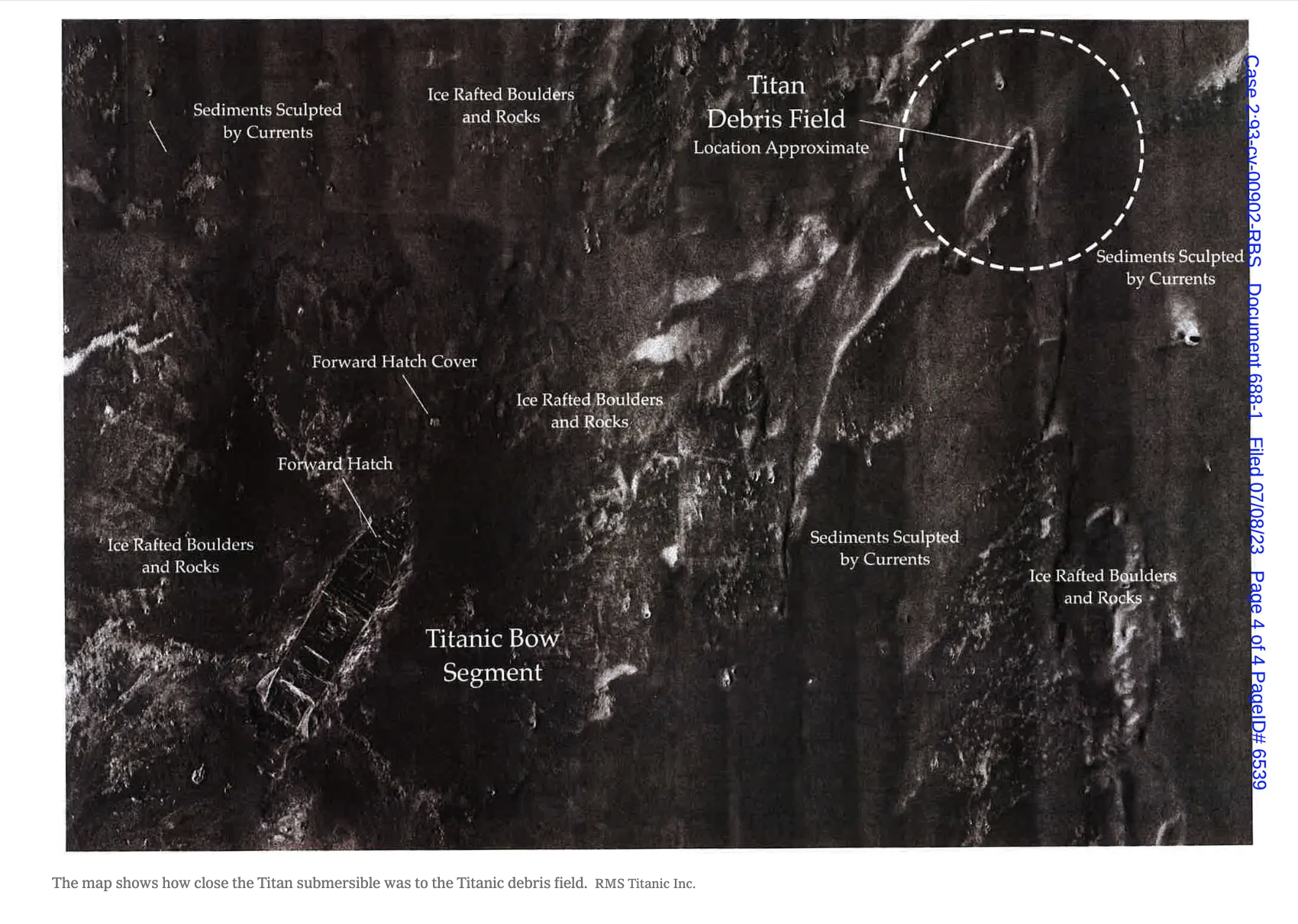 A map from The New York Times shows how research can enhance writing.
A map from The New York Times shows how research can enhance writing.
Good copywriting is well-researched because it is important to have accurate and up-to-date information in order to create compelling and persuasive content.
Research allows copywriters to understand their target audience, industry trends, and competitors. It helps to identify the pain points and needs of potential customers, enabling the writer to address them effectively. Thorough research also ensures that any claims made in the copy are backed by solid evidence, increasing credibility and building trust with the audience.
By investing time in research, copywriters can provide valuable insights, create content that resonates, and ultimately drive desired actions from their readers.
9) It uses formatting to its advantage.
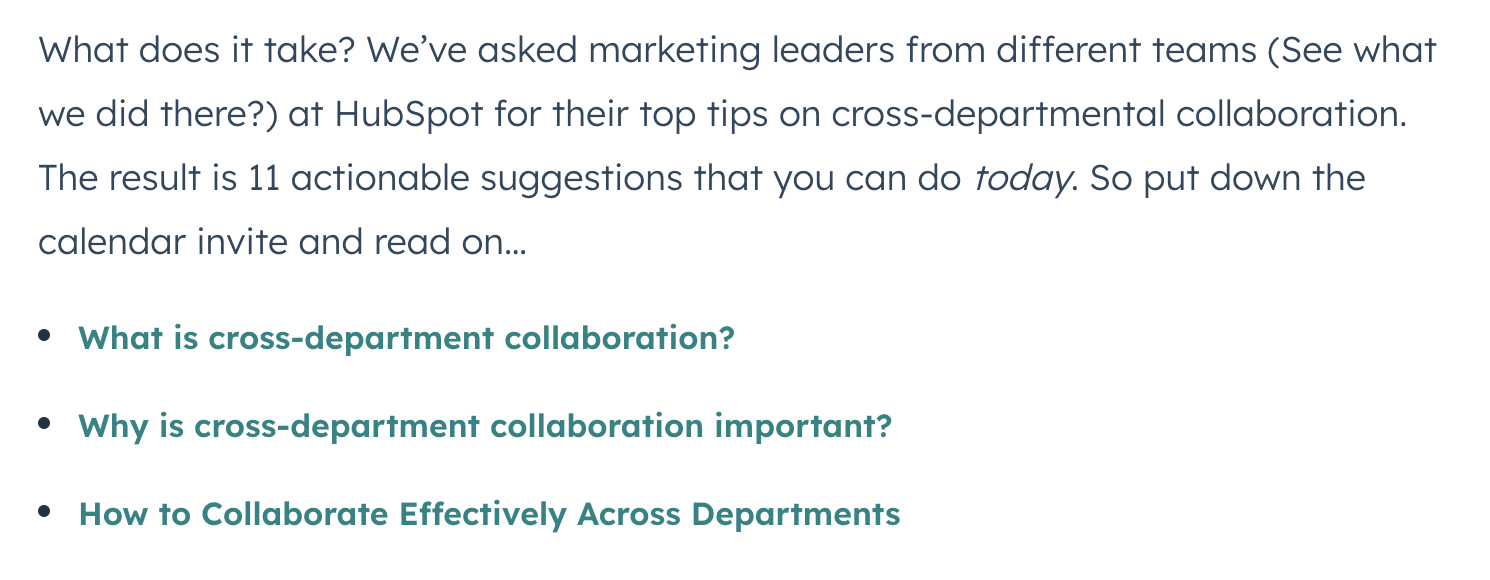 This HubSpot blog post uses a table of contents
This HubSpot blog post uses a table of contents
Formatted pieces are far easier to read than blocks of text. By incorporating elements such as a table of contents, subheadings, bullet points, bold or italicized text, block quotes, and whitespace, copywriters can break up the content into easily scannable and digestible chunks.
Formatting helps readers navigate through the copy quickly, find key information or main points, and understand the structure of the content at a glance. It also draws attention to important details or calls-to-action, making them more noticeable and compelling. Well-formatted copy keeps readers engaged, reduces cognitive load, and ensures that the message is effectively communicated to the audience.
10) It flows naturally.
When copywriting flows naturally, it feels effortless and easy to consume. The sentences and paragraphs flow smoothly from one to another, guiding the reader along a logical and coherent path.
This flow is achieved through the use of concise and clear language, proper sentence structure, and effective transitions. A natural flow eliminates any stumbling blocks that could distract or confuse the reader, allowing them to focus on the message being conveyed. It enhances comprehension, engagement, and ultimately, the effectiveness of the copy in achieving its intended purpose.
11) It has a strong voice.

An example from the HubSpot blog
A strong voice reflects the brand’s personality, values, and identity, allowing it to stand out in a crowded market. It communicates the brand’s unique tone, style, and attitude, which in turn helps to build a connection and establish a relationship with the readers.
Additionally, a strong voice adds authenticity, credibility, and emotional appeal to the copy, making it more engaging and persuasive. It enables the brand to leave a lasting imprint on the minds of the audience and fosters brand loyalty. Ultimately, a strong voice in copywriting helps a brand to be recognizable, relatable, and influential in its communication efforts.
12) It leverages AI tools.
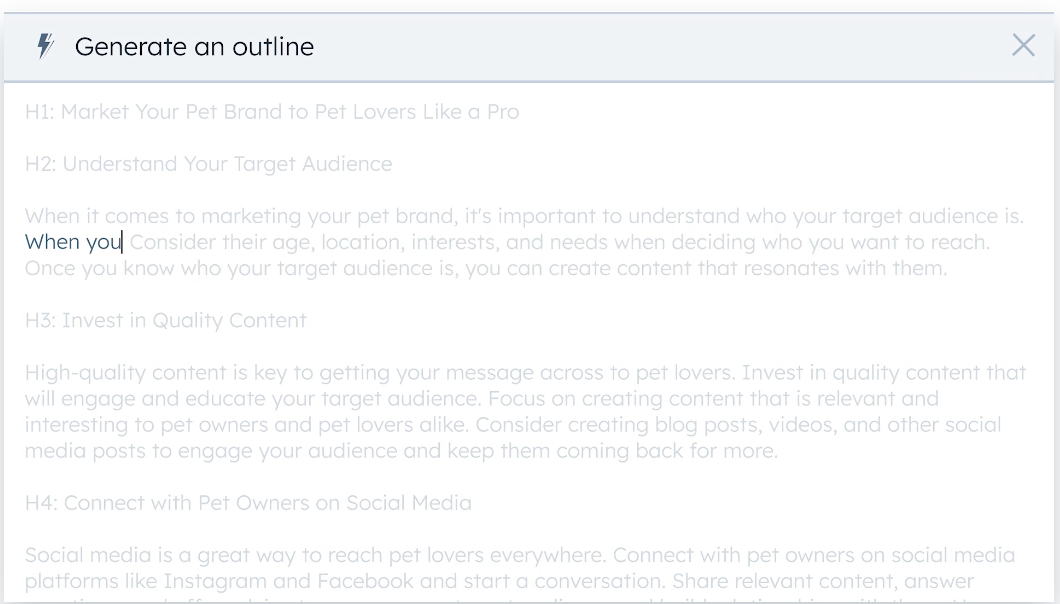 Get started with HubSpot’s Content Assistant
Get started with HubSpot’s Content Assistant
AI tools like HubSpot’s Content Assistant can provide real-time feedback on the readability, grammar, and structure of the copy. They can suggest improvements, highlight potential errors, and offer alternative word choices to optimize the content. These tools can also recommend relevant keywords and help ensure that the copy aligns with SEO best practices, improving its visibility and search engine ranking.
By leveraging AI tools, copywriters can save time, enhance their writing skills, and produce high-quality content that resonates with the audience and achieves the desired results.
13) It is creative.

Even the driest topics can be made interesting with creative copywriting. Interesting topics could also use more spice. Creativity allows copywriters to come up with unique and compelling angles, ideas, and storytelling techniques that make the copy stand out. Creative copywriting involves finding fresh and unexpected ways to communicate a message, evoke emotions, and inspire action. It involves using imaginative language, clever wordplay, and visually appealing imagery to captivate readers.
Ultimately, creative copywriting helps brands differentiate themselves, leave a lasting impression, and build a strong connection with their audience.
14) It ends strong.
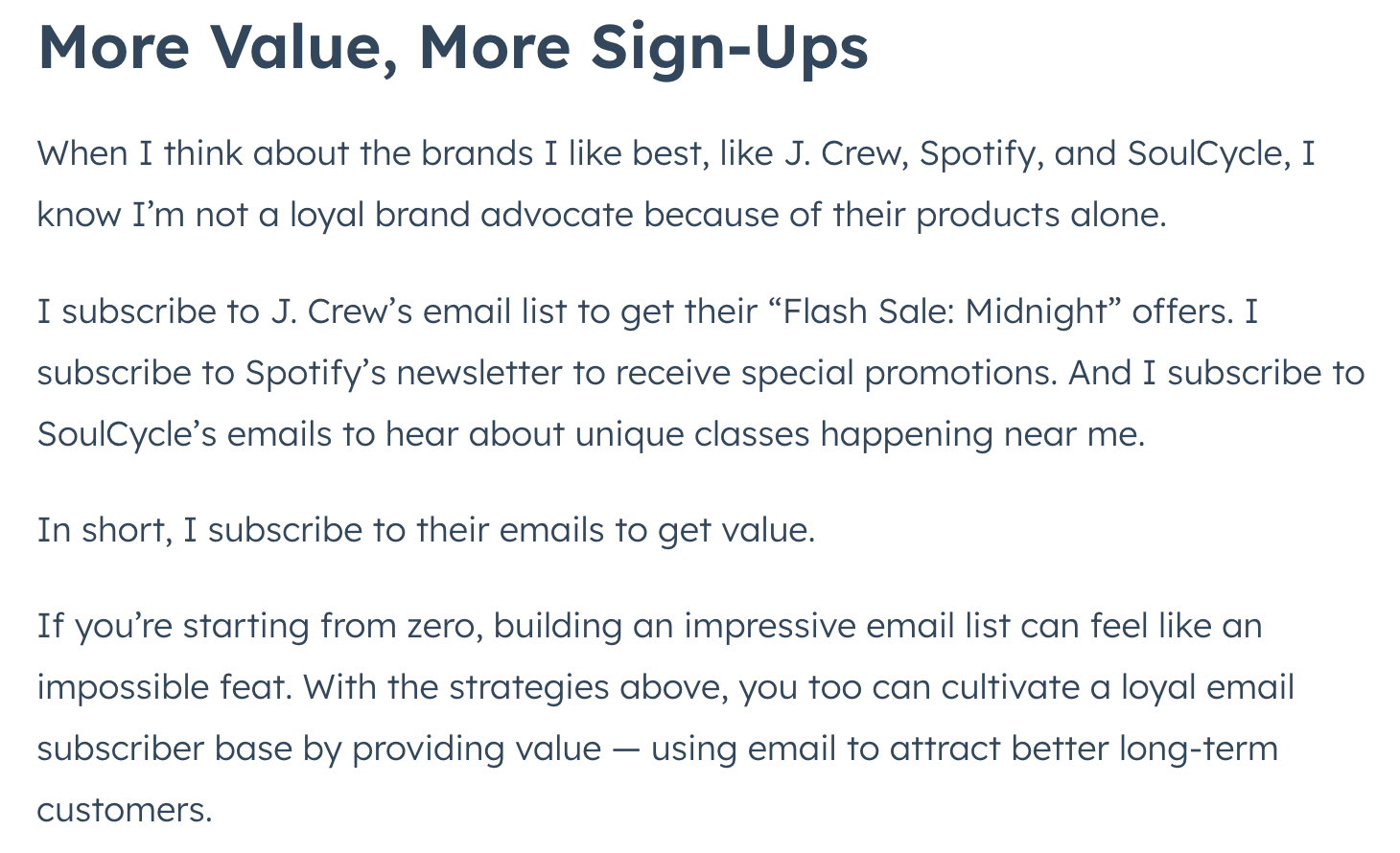 An example of a conclusion from a HubSpot blog
An example of a conclusion from a HubSpot blog
Imagine watching You can have a superbly well written post but if it doesn’t have a good ending, what’s the point?
Good copywriting has strong endings because they leave a lasting impact on the reader and reinforce the key message or call-to-action. A strong ending summarizes the main points, highlights the benefits, and creates a sense of urgency or excitement to entice the reader to take action. It provides closure and a sense of satisfaction, leaving the reader feeling fulfilled and motivated. A strong ending can also include a compelling closing statement, a memorable tagline, or a thought-provoking question to spark further engagement or conversation.
15) It cuts out excess.
Good writing gets to the point — and that means cutting out excessive phrases, and rewording your sentences to be more direct. In an ad celebrating its “academic” readership, The Economist playfully demonstrates this below.

How do you rid excess words from your writing? It’s half practice, half knowing where to cut. This article from Daily Writing Tips is one of the most effective summaries I’ve found on precise writing. Included in its tips:
- Reduce verb phrases: For instance, turn “The results are suggestive of the fact that” to “The results suggest.”
- Reduce wordy phrases to single words: You can change “in order to” into “to.” Another example: Turn “Due to the fact that” into “because.”
- Avoid vague nouns: Phrases formed around general nouns like “in the area of” or “on the topic of” clutter sentences.
- Read the full list of brevity tips here.
In general, if you can afford to cut without losing the meaning of a sentence, do so. Push yourself to strip down your word count. Turn 50-word homepage copy into 25, then push yourself again to make that 25-word sentence into 15 words. It’s not about brevity so much as it is about making sure every word counts in your writing.
Since my last point was about getting to the point, I’ll keep this brief: Words matter. Every time you sit down to write an ad, web page, video script, or other content for your company, you have the opportunity to break through to people. Find those opportunities in your marketing and make sure that you’ve made the most of them.
Editor’s note: This post was originally published in November 2017 and has been updated for comprehensiveness.
![]()



